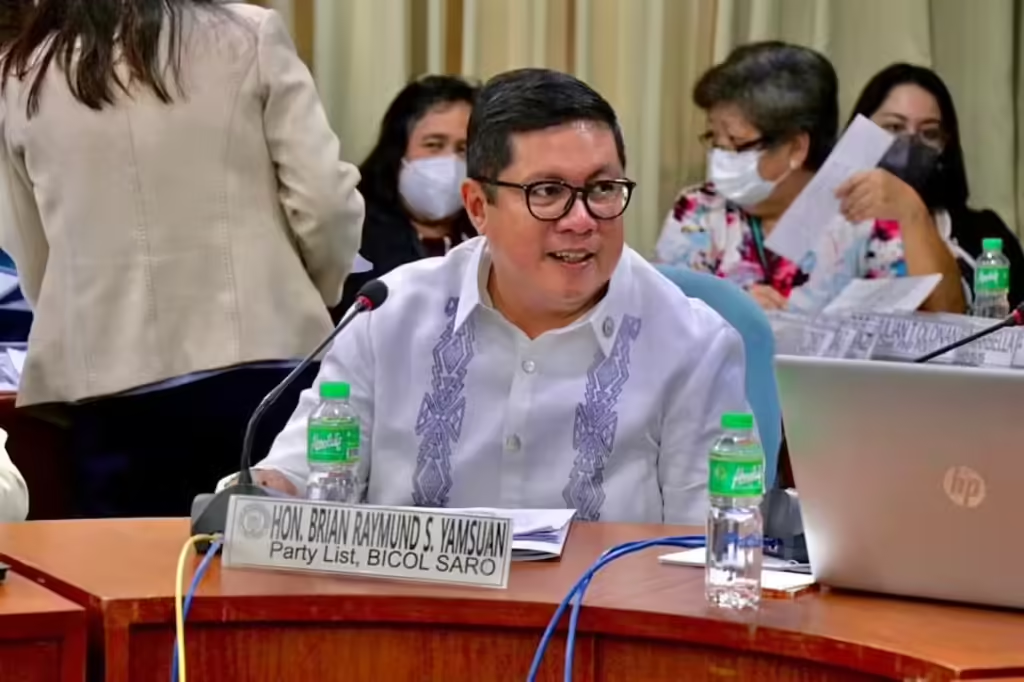Lawmaker pushes for approval of public school digitalization bill

Bicol Saro Rep. Brian Yamsuan —INQUIRER.net file photo
MANILA, Philippines — Bicol Saro Party-list Representative Brian Raymund Yamsuan is calling on his fellow lawmakers in the House of Representatives to pass a bill that will allow the digitalization of public school systems, emphasizing its potential benefits for both teachers and students.
In a statement on Friday, Yamsuan said that House Bill (HB) No. 276 — which he co-authored — would allow modernization of the country’s public schools by using technology to devise an educational roadmap.
The bill, filed last June 30, 2022, would set aside P500 million from the budget to support this initiative.
“In the last pandemic, digital technology was used as a crisis management tool to ensure that most students were able to continue learning even when lockdowns and other health protocols were in place,” Yamsuan said.
“But today, even without a crisis, digital technology has proven to be a must in facilitating learning inside and outside the classroom,” he added.
According to Yamsuan, the bill is necessary because a lot of public schools still struggle with a possible switch to distance learning or online classes during calamities or other emergencies, unlike in private educational institutions.
Coupled with the guidelines from the Department of Education (DepEd) regarding class suspensions — where only the declaration of a Tropical Cyclone Wind Signal No. 2 would suspend face-to-face classes for Grade 1 to Grade 10 students — Yamsuan believes there is a need to create a Digital Technology Roadmap.
“These options should have covered the use of digital technology for all public schools to provide students with better learning outcomes. But unfortunately, not all our public schools have the necessary tools to shift to online learning,” he said.
“The government needs to invest now in institutionalizing the digitalization of our public schools so that we can be prepared for whatever challenges our education system may face now and in the future,” he added.
Under the proposal, the Digital Technology Roadmap for Public Schools would be formulated by DepEd, in consultation with the Department of Information and Communications Technology (DICT), the Department of Science and Technology (DOST), and the Commission on Higher Education (CHEd).
“It shall be formulated based on the existing strategic plans, current and future capacities and the potential for adopting the emerging digital technologies, in accordance with the national development goals,” the bill read.
The bill stated the following objectives:
- Broadening and maximizing the use of digital technology to aid learning in a rapidly changing and increasingly globalized environment
- Establishing as system of upgrading and replacing outdated technology and providing technical support to maintain the systems
- Providing sufficient training and support for teachers and students in the use of digital technology in public education
- Providing professional development to enable educators to use digital technology more effectively in the classroom
“Institutionalizing the use of digital technology in our public school system will help promote inclusive learning as this will increase the access of marginalized communities to quality education via the Internet. Digitalization will also ensure that our students are future-ready and globally competitive,” he noted.
The education sector has faced several problems with regards to the provision of quality education. In December 2023, the Programme for International Student Assessment (Pisa) said that Filipino students who took part in their assessment were five to six years behind in mathematics, science, and reading compared to their 15-year-old counterparts from most of the participating countries.
Then just this June, Pisa said that Filipino students logged a mean score of 14 on the creative thinking performance of 15-year-old students — the second-lowest among 64 ranked countries.
But aside from the quality of education, the academic calendar — which was disrupted by the COVID-19 pandemic, leading to days lost for students — was also a hot topic.
During the country’s hot and dry season, there were several reports that some students either fainted or were even hospitalized due to the intense heat, with the heat index reaching 40°C or higher in some areas.
Some schools were even forced to revert to online learning, even if the threat of COVID-19 transmissions was not imminent during that time. These incidents, in turn, interrupted classes as some schools were still not ready for blended learning.
RELATED STORIES
PISA shows PH students ‘5 to 6 years’ behind
52 schools in Region 7 ‘ready’ for return of face-to-face classes
Disclaimer: The comments uploaded on this site do not necessarily represent or reflect the views of management and owner of Cebudailynews. We reserve the right to exclude comments that we deem to be inconsistent with our editorial standards.
